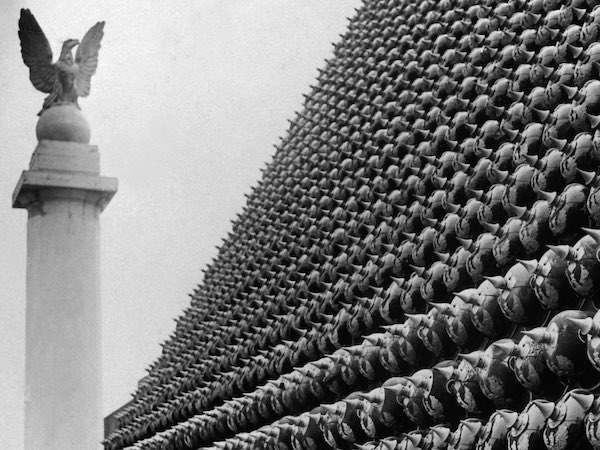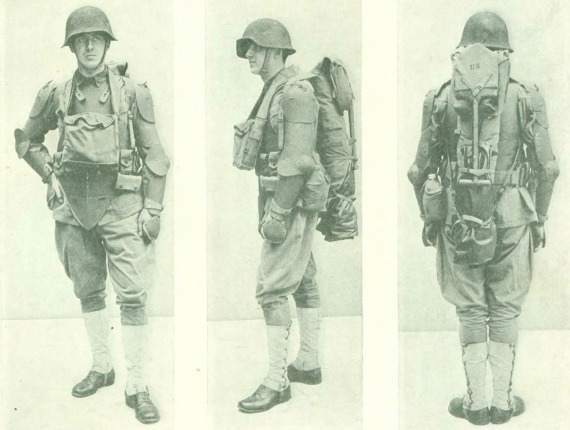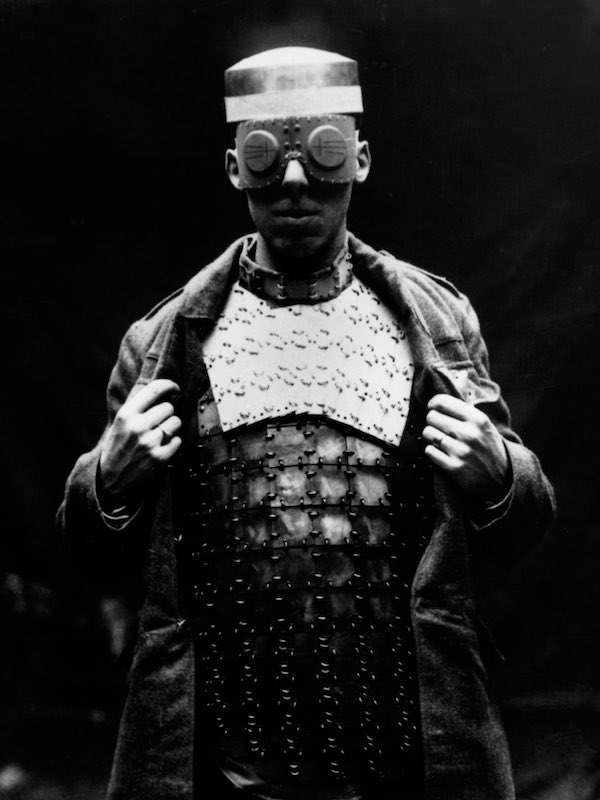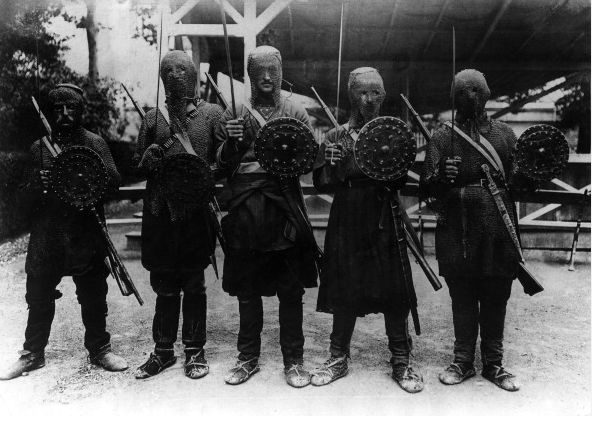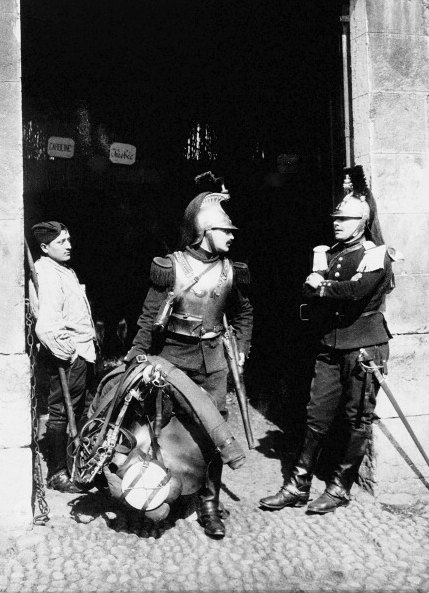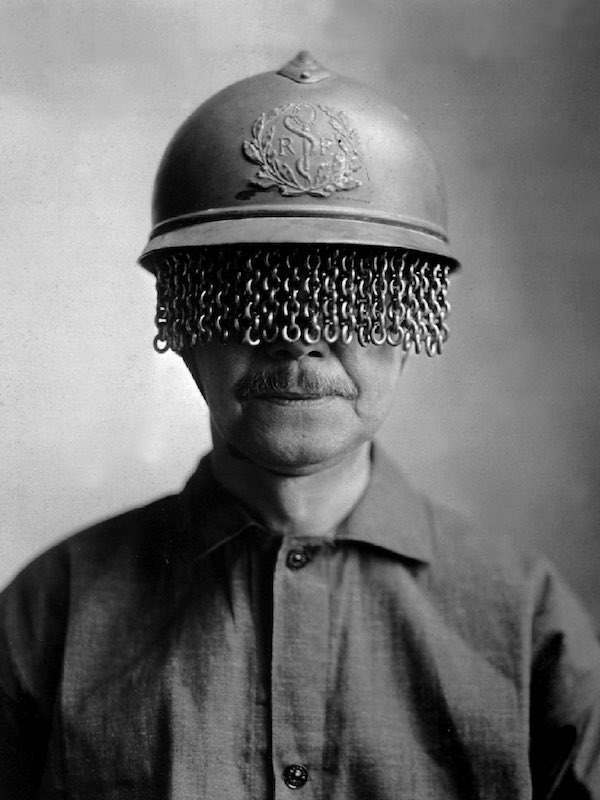
1918
A man models a steel helmet covered with a built-on chain screen to protect a soldier’s eyes from rocks, shells and other fragments during World War I. It was created by E J Codd Company of Baltimore, Maryland. (War Department photo.)
War creates a need for innovation. In 1914, high technology for men in battle constituted of khaki clothing.
The British realised that protecting the head was a good idea. So. The steel helmet was issued. But not everyone got one.
That was fine so long as the enemy didn’t go for the body. So. The British Army Design created the Dayfield body shield, a canvas jacket with layered metal plates.
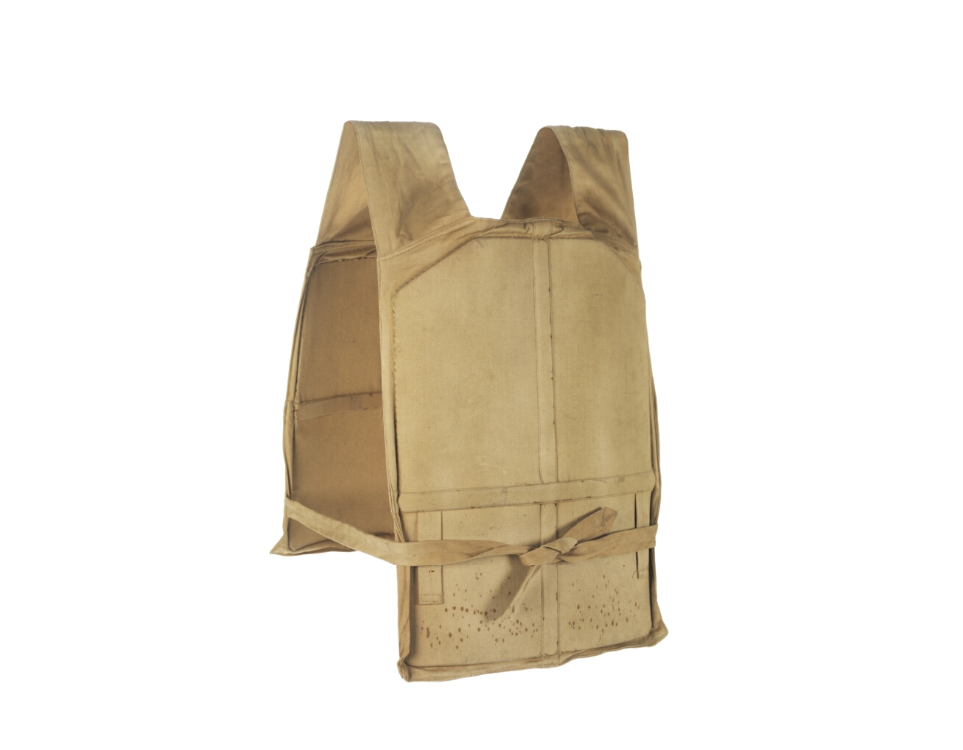
Dayfield Body Shield (light model). Via IWM
The German army soon sported “Lobster” armor made of nickel and silicon plates.

A German member of a “Trench Attack Squad” poses in steel body armor and two stick grenades. The armor, capable of stopping a pistol round but only superficially helpful against rifle fire, also helped protecting against bayonet and other edged weapons thrusts. The additional weight though fatigued the wearer quickly and defeated any tactical advantage he might have wearing it. Via
Other German armour was more rudimentary:

First World War period German Army body armour of the type initially issued to front line troops in 1916. The equipment weighed between 20lbs and 24lbs (9kg and 11kg), reflecting the two variant sizes produced; 500,000 sets were issued to men on the Western Front. Capable of stopping low velocity fragments and shrapnel, the Sappenpanzer (trench armour) was, due to its weight, only practical for troops on sentry duty and machine gunners operating in static positions and was designed to be used together with the armoured brow plate that hooked on to the steel helmet. Via IWM

October 1917: A present day soldier armed with a rifle shakes hands with a soldier in a full suit of armour armed with an axe. (Photo by Topical Press Agency/Getty Images)
The Imperial War Museum:
First tried in battle in 1915 body armour was, as far as British usage were concerned, used mainly on an individual basis as it never became a universal issue (it is understood that only enough body armour was available to equip 2% of the army). Of the types used by British personnel, there were three main categories: Rigid ‘hard’ armour (often comprising of metal plates sandwiched between fabric and worn as a vest or waistcoat); Intermediate armour (various forms of small square plates of metal attached to a canvas support to form a protective waistcoat); Soft armour (made of layers of silk/cotton/tissue & linen scraps sandwiched in fabric waistcoat).

circa 1914: A soldier wear body armour made of linked steel plates covering his chest and abdomen. (Photo by Central Press/Getty Images)
The Atlantic:
Weight was the big bugaboo of 20th century body armor. Some wanted armor panoplies that could stop machine gun and rifle rounds even at 200 yards. The Germans ramped up distributing their lobster-like suite toward war’s end. Intended mostly for machine gunners, and at 22-27 pounds, it was considered too heavy for regular infantry. Was there any hope for the front line soldier?
Enter Bashford Dean and his team. Met armorers crafted a battle harness with complete torso protection, front and back, for about 8.5 pounds With pauldrons (shoulder guards), couters (elbow) and vambraces (forearm), add another 4 pounds With helmet — and Dean offered the two finest battle helmets of modern times — it all came to just over 15 pounds Quite wearable, you would think, given that U.S. soldiers’ full panoply today can reach 40pounds, close to 15th century full-body plate armor.
Moreover, Dean’s panoply was fully cushioned with “vulcanized sponge-rubber,” and with the latest alloys, could stop a .45 ACP at 1000 ft. per second (and a rifle ball at 1250 ft. per second). In terms of coverage, ease and comfort, and raw protection, this was as close as anyone in the war came to the Holy Grail of personal body armor. Deployed in the big American Expeditionary Force (AEF) offensive at the Meuse-Argonne, it could have cut 26,000 battle deaths by one third or more.
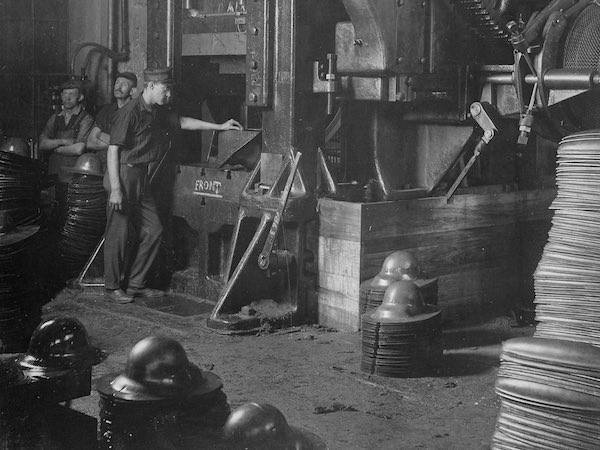
View of workers operating a large power press for shaping helmets, in the plant of Hale & Kilburn Corporation, New York.

circa 1917: A suit of heavy body armour used by the Americans in France. (Photo by Central Press/Getty Images)
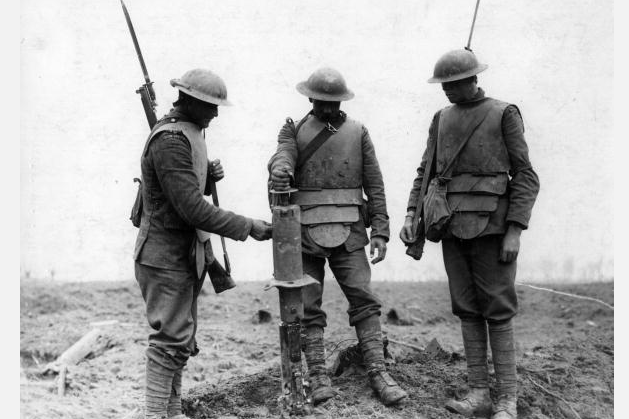
Caption:A British field party of the Irish Guard at the Battle of Pilckem Ridge, wearing breastplate armour for protection against stray bullets
Would you like to support Flashbak?
Please consider making a donation to our site. We don't want to rely on ads to bring you the best of visual culture. You can also support us by signing up to our Mailing List. And you can also follow us on Facebook, Instagram and Twitter. For great art and culture delivered to your door, visit our shop.


